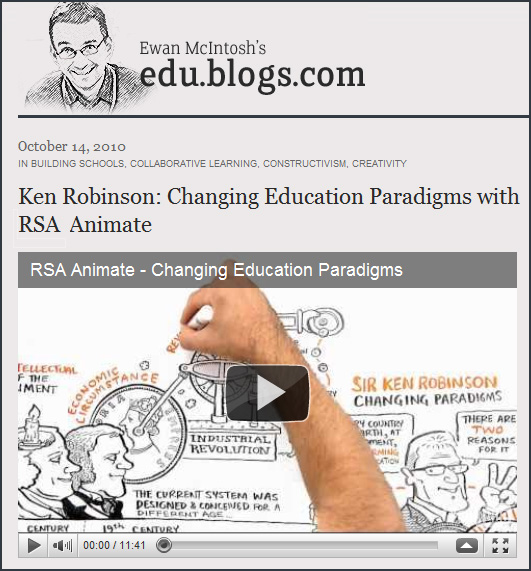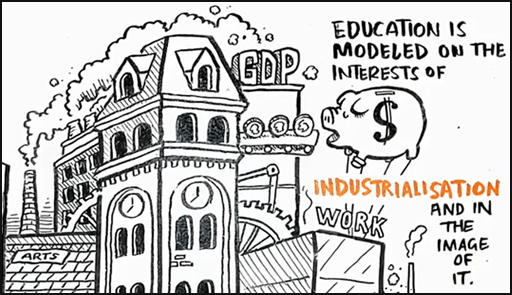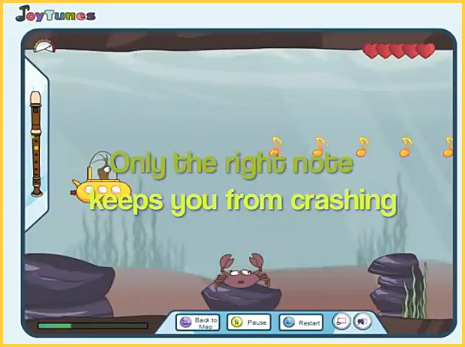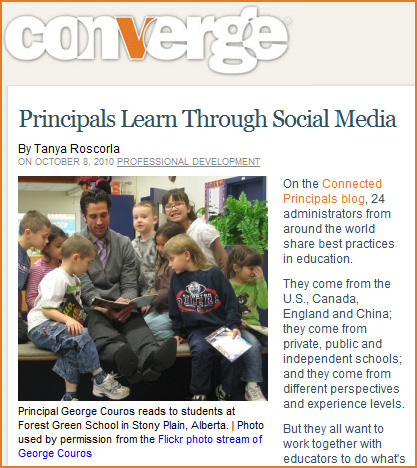10 steps to better lesson plans — iLearn Technology
The importance of art in a child’s development — from MaryAnn F. Kohl, art author and educator
JoyTunes: A unique approach to computer-based music teaching — from thenextweb.com by Brad McCarty
Also see:
Ushering iPad into the classroom — from The Journal by Denise Harrison
A number of built-in features, tools, and add-ons are helping to propel Apple’s iPad into the classroom. Technology analyst Denise Harrison looks at the benefits of iPad in education and predicts some unanticipated applications.
Students Solve Math Mysteries in Sackboys and the Mysterious Proof — from spotlight.macfound.org with Kan Yang Li
Spotlight talks with Kan Yang Li about games-based learning and the new math-related adventure level he created for the popular video game “LittleBigPlanet.”
Change Agent — from edweek.org by Anthony Rebora
Will Richardson, a former teacher-turned-tech expert, says schools need to revolutionize teaching and learning to keep pace with societal changes.

Will Richardson at work, speaking to faculty members at Hunterdon Central Regional High School in Flemington, N.J. — Emile Wamsteker
.
You’ve written that too many teachers are “un-Googleable.” What do you mean by that and why does it matter?
What I mean is that too few teachers have a visible presence on the Web. The primary reason this matters is that the kids in our classrooms are going to be Googled—they’re going to be searched for on the Web—over and over again. That’s just the reality of their lives, right? So they need models. They need to have adults who know what it means to have a strong and appropriate search portfolio—I call it the “G-portfolio.” But right now—and this is my ongoing refrain—there’s no one teaching them how to learn and share with these technologies. There’s no one teaching them about the nuances involved in creating a positive online footprint. It’s all about what not to do instead of what they should be doing.
The second thing is that, if you want to be part of an extended learning network or community, you have to be findable. And you have to participate in some way. The people I learn from on a day-to-day basis are Googleable. They’re findable, they have a presence, they’re participating, they’re transparent. That’s what makes them a part of my learning network. If you’re not out there—if you’re not transparent or findable in that way—I can’t learn with you.
Also mentioned:
- Blogs, Wikis, Podcasts, and Other Powerful Web Tools for Classrooms
(Corwin). Now in its third edition, the book has sold more than 60,000 copies and become one of the most influential books available on integrating Web 2.0 technology in the K-12 classroom. - Powerful Learning Practice
- His blog, Weblogg-ed
31 of my favorite digital storytelling sites — from iLearn Technology blog
A Web 2.0 class: Students learn 21st century skills, collaboration, and digital citizenship — from Edutopia.org by Andrew Marcinek
Students in Van Meter, Iowa, Burlington, Massachusetts, and Philadelphia, Pennsylvania are experiencing education in a new room. Yes, they still go to class in a building, with walls, doors, and windows, but there is something different about these three classrooms. They are all connected. The classroom is flat.
…
The Virtual Classroom
The class is designed to teach Web 2.0 skills, digital citizenship, personal network building, and social media responsibility and practice. The students in all three of these classes have never met in person; however, they have all connected via Skype and their class blogs. They have also had many professionals come and speak to them via Skype. This type of learning is limitless and allows students to broaden their scope of the world. “Since I have started using Skype and blogging,” notes Jessie Hasenwinkel, junior at Van Meter High School, “I have been able to virtually meet the people that can help me get the answers I need for what I am searching for in school and one day, in my career.”
Each week students write a blog post on topics such as defining a personal learning network, using Skype in the classroom, and how to promote blog traffic. Students subscribe to each other’s blogs using Google Reader and leave comments for each other. Some students in these three high schools have made great connections and found common interests. They are expanding their learning opportunities and through the efforts of the teachers and principals, engaging with vast community of learners.
White House Summit touches on K-12, college link — from edweek.org by Caralee Adams
Buoyed by White House attention to the importance—and needs—of community colleges, some in the K-12 community are waiting to see if that spotlight will generate momentum for improved college readiness and better alignment of high schools with higher education.
This week’s White House Community College Summit was largely a symbolic event drawing about 150 leaders in education, business, and philanthropy and aimed at focusing attention on what is often labeled an undervalued sector of higher education.
But while the summit produced no big policy recommendations, the issues of high school preparation and college access hovered in the background as participants broke up into working groups after opening remarks by President Barack Obama.
.
From DSC:
Some might look at what I cover in the Learning Ecosystem blog and comment, “What the heck is he doing? He can’t know everything about the teaching and learning worlds within the K-12, college, and the corporate training spaces!” And they would be right. But I don’t base my work here on myself. As a regular follower of this blog would know, I look to the expertise of others. While I will often interject my own thoughts and contributions here, I try to aggregate the valuable experiences and insights of others.
Along these lines, I want to interject that those of us in higher ed need to be very aware of what’s happening in K-12. Students’ expectations are the key items to note here. Graduates from high school will come to our doors (physical and virtual) with a set of expectations and skill sets. To me, these expectations seem to be changing. We must meet them where they are at.
So this item caught my attention. More later…
‘Action!’ Student-generated video web site teaches visual communications skills — from The Journal by Denise Harrison
Teachers have free access to virtual field trips and other digital educational resources through Meet Me at the Corner, a repository of educational videos that’s moderated to ensure relevance and educational value. It also helps train kids to produce their own video podcasts and create documentaries they can share with their peers around the world.
How music teachers got their groove back: Music instruction goes digital — from The Journal by Jennifer Demski
Faced with meager enrollment in band, orchestra, and choir programs, schools are using digital technology to excite students about creating music on today’s terms
Resources for music instructors
Technology Institute for Music Educators (ti-me.org):
A nonprofit organization that provides professional development and technology certification to music educators. Members have access to more than 1,000 lesson plans designed to aid in the application of music technology, grant writing advice, an online discussion group, and more.
Music Educators Professional Learning Network (musicpln.org):
A free online social networking environment that offers peer support and information on integrating technology into music education.
National Association for Music Education (menc.org):
A professional organization that provides support in all areas of music education, including the integration of technology in the music classroom.
Other links mentioned:
- Avid: avid.com
- Barbara Freedman’s website: musicedtech.com
- Carol Broos’website: beatechie.com
- GarageBand: apple.com/ilife/garageband.com
- Sibelius: sibelius.com
The changing landscape of teaching — from EdReformer.com by Tom Vander Ark
Now that anyone can learn anything and learning professionals can work anywhere, a learning ecosystem is being created around the formal public delivery system—sometimes supporting, sometimes competing, sometimes infiltrating.
Online learning is full and part time option for millions of students. Massive foundation and government programs are pushing data driven-instruction and teacher evaluation. The combination of direct intervention and the surrounding web of opportunity means a slow decline in traditional education employment and strong growth in non-traditional roles
…
Like doctors, lawyers, and accountants, learning professionals can freelance, start a business, build a nonprofit, or join a public delivery system. Welcome to the new learning landscape.














